Acts 2 Versus The Tower of Babel: The Key to Crafting a Sermon Your Listeners Understand
We preach a clear, compelling sermon with one message of Good News—and listeners quote parts of the sermon that we never said.
When they “heard” something that moved them, it can make an amusing, head-scratching moment as we wonder, “How did they hear that?!”
It’s almost as if some sermons create an Acts 2 moment where people hear the gospel “in their own language.”
On the other hand, some sermons are more like a Tower of Babel moment.
These sermons confuse, distance, or disengage.
In this case, it’s as if people heard a sermon in a different language altogether and understood little of what was said.
The Difference between an Acts 2 Sermon vs. a Tower of Babel Sermon? Scaffolding.
Just as the backstory of preachers’ lives profoundly influences the way we interpret Scripture, discern a message, and deliver our sermons, the backstories of each listener and the congregation as a whole are influential in what they hear.
Listeners engage in an inner dialogue with the sermon, interpreting it with their own language, experience, culture, perspective, fears, and hopes.
Back and forth, as words enter listeners’ ears or eyes, they assess what they take in against what they already know.
The mixture of the sermon’s words and listeners’ backstories creates the alchemy influencing what they “hear.” For example:
Is the vocabulary of the sermon understood?
If it isn’t, listeners fill in the gaps with words they do know, which may or may not match the preacher’s meaning—or they may tune out from boredom or frustration.
Does the preacher’s interpretation of the text ring true to the listener’s experience?
If so, the listener probably feels seen, validated, and encouraged, and they hear the message.
However, if the interpretation rings false, the listener may feel misunderstood, overlooked, or undervalued. What they hear is that they don’t matter.
An Acts 2 sermon invites the Spirit when it “scaffolds” new ideas, learning, or experiences.
Scaffolding is a term in education that describes how new information is presented in connection to knowledge or context already familiar to the student.
In preaching, we can use scaffolding to connect the sermon message to listeners’ backstories so the ideas can be taken in, reflected on, and made their own.
Conversely, a Tower of Babel sermon doesn’t scaffold. This sermon uses vocabulary or suggests ideas that are disconnected from listeners’ backstories or incomprehensible to listeners’ existing knowledge. Listeners feel confused, offended, or disconnected—or fall asleep.
Two Steps to Help you Scaffold Sermons for more acts 2 Preaching
1. Really Get to know your congregation
Listen deeply in casual conversations, meetings and pastoral care situations, and read their social media accounts.
Ask about their family histories and where they grew up and what brought them to faith. What were the defining moments of their relationship with God? What worries them and gives them hope?
Learn the history of the congregation, both formal and informal. How, when, and why was it founded? How did it get its name? What were the defining moments that shaped it to become what it is today? What worries them and gives them hope?
Keep notes as you go and refer to these often as you craft your sermon.
What vocabulary will they understand?
What cultural references would be commonly understood?
What histories, both individual and congregational, will influence how they hear the message?
How do you assess their emotional intelligence?
In general, do they speak more like storytellers or educators? What does this tell you about what might resonate?
Once you know the backstories, contexts, and existing knowledge of your listeners, you can better connect the message in your sermon to your listeners’ experiences and understanding.
2. Intentionally Reflect on Sermons—with Help
Gather a group of listeners specifically to offer feedback, or ask permission from weekly Bible study groups to stick around at the end for an extra fifteen minutes to help you learn how and why a sermon “landed.”
Ask them what they heard and what led to forming that interpretation.
When the sermon landed in the way you intended or produced an Acts 2 moment, take that in. You and the Spirit did good work together. Give God thanks!
Pay attention to what they tell you about what made it work:
Was it that you spoke meaningfully to listeners’ culture, context, or history
Did you speak in “their” language with a vocabulary and references they understood?
Did you the light the gospel on their worries or shine the way forward for their hopes?
Whatever you glean, apply it to future sermons.
When you hear the places that some experienced a Tower of Babel moment and it didn’t land as expected or hoped, take a deep breath, say a prayer, and ask God for assistance to stay curious, vulnerable, and willing to learn.
What moved the sermon in an unintended direction?
What can you do differently to create more clarity and connection next time?
NEED Help Gathering
Sermon Feedback?
Because intentional reflection is so important, sermon feedback is a central component of The Backstory Preaching Mentorship.
In addition to organizing sermon appraisal sessions with other participants, we help you gather a group of listeners from your context (where applicable) and provide training materials so they can offer specific and useful feedback.
With greater awareness of what works and what doesn’t, you’ll develop each new sermon with deeper understanding, clarity, and sensitivity for more Acts 2 sermons.
This concrete awareness (vs. guessing at what’s effective) is where real growth comes from—and why so many of our participants receive enthusiastic feedback that their preaching is improving and resonating as they engage in the Mentorship.

